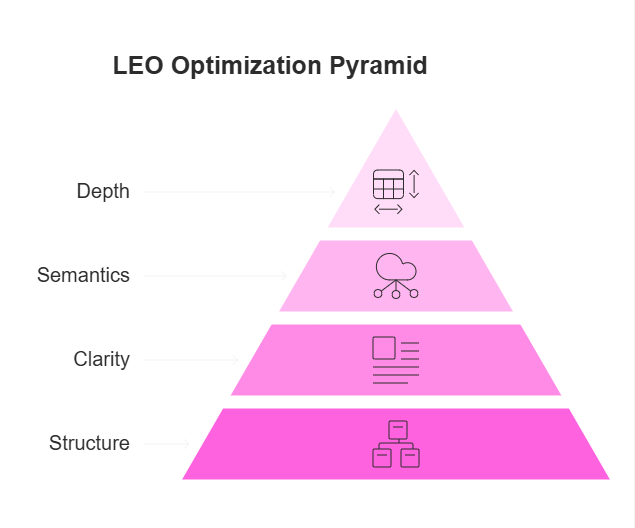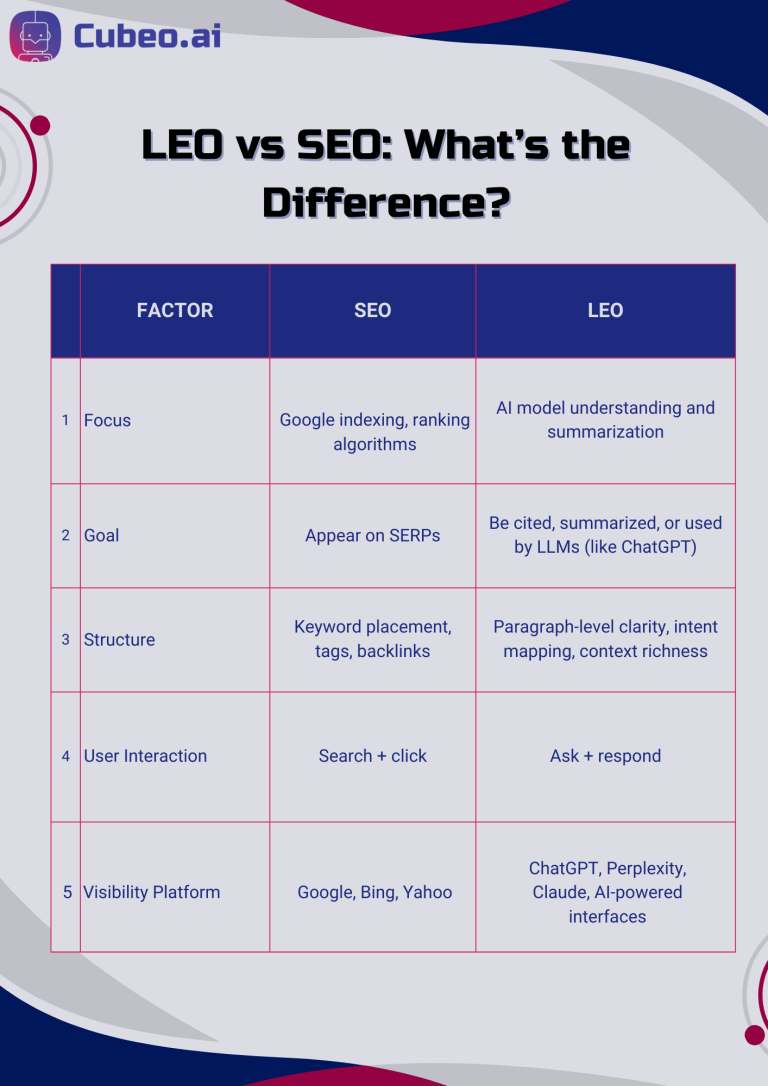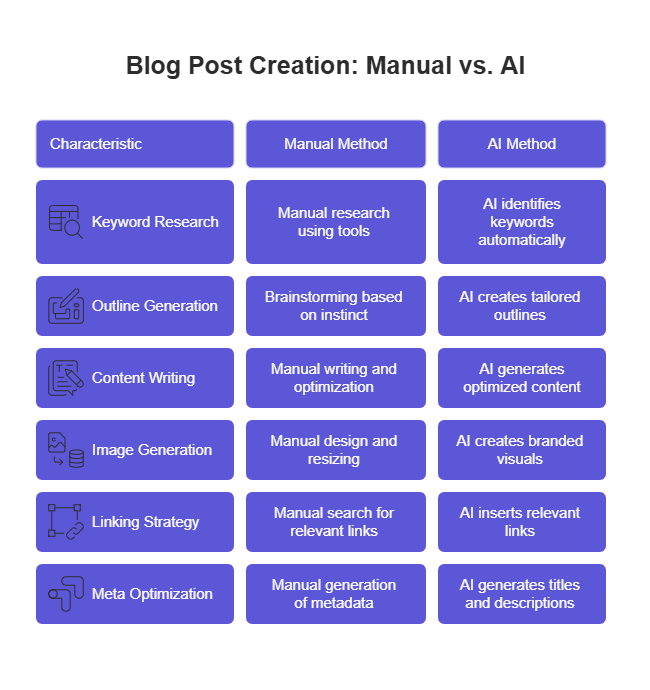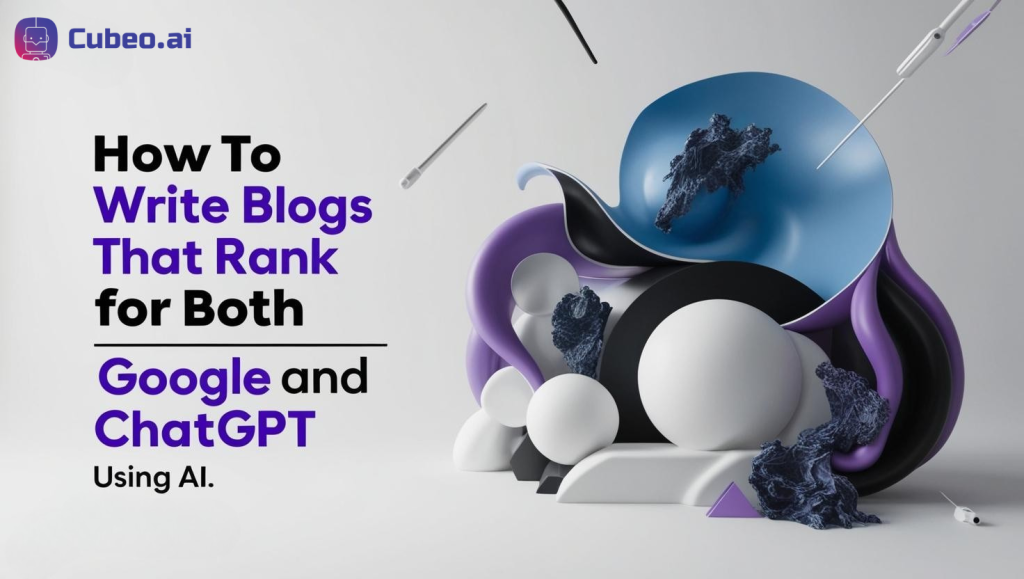How long should writing a blog post actually take?
If you’ve ever stared at a blank screen for hours or spent your weekend “just polishing the intro,” you’re not alone. Some experts say six hours is the sweet spot for a high-quality blog. Others? Days.
But here’s the real question:
Is all that time even worth it, if no one reads your blog?
That’s where LEO (Large Language Model Optimization) enters the chat.
Search engines are no longer the only gatekeepers. Now, tools like ChatGPT, Perplexity, Claude, and others are surfacing blogs in real time, based on structure, clarity, and LLM context. So no, SEO alone won’t cut it anymore.
The good news?
You don’t need to be an SEO wizard or a prompt engineer. You just need the right tool.
With Cubeo AI, you can skip the keyword spreadsheets, writer’s block, and image design chaos. It helps you research, write, optimize and illustrate a blog that ranks for both humans and machines. In minutes, not days.
Yes, you can finally get your time back and grow visibility across search engines and LLMs.
What is SEO?
We’ve all heard the term SEO thrown around in every content marketing or digital strategy meeting—but what does it really mean today?
SEO (Search Engine Optimization) is the process of optimizing your website or content so it ranks higher in search engines like Google, Bing and others. The goal? To make sure people find your content when they search for something related to your product, service, or topic.
Sounds simple, right? But behind that simplicity is a whole playbook.
Why Is SEO Still Relevant in the Age of AI?
You might be thinking: If AI tools like ChatGPT and Perplexity are giving answers directly, do people still Google things?
Absolutely. In fact, they do both.
SEO ensures your content appears when people are searching. LEO ensures your content is used when AI is answering.
That’s why optimizing for both is crucial.
Plus, AI models like GPT-4 still rely on indexed, high-authority content to learn and pull from, so strong SEO helps your LEO too.
What is LEO?
If SEO (Search Engine Optimization) got you on Google’s front page, LEO is what gets your content into the answers ChatGPT gives users, and the summaries on tools like Perplexity, You.com, Claude, and even Bing Copilot.
LEO stands for “Large Language Model Optimization.” It’s the art and science of making your content not only searchable, but understandable, retrievable, and quotable by modern AI models.
While SEO focuses on keywords, backlinks, and metadata, LEO is all about structure, clarity, semantics, and depth.

Why Your Blog Needs to Rank for LEO
You already know why SEO matters. But now, LEO isn’t just a buzzword—it’s your blog’s new best friend.
Let’s be real: the way people consume information is changing fast. Instead of Googling, more users are turning to AI tools to get instant answers. That means the content those models use, cite, and summarize is shaping public perception, and purchase decisions—more than ever.
So, if your blog isn’t being “read” by AI models like ChatGPT or Perplexity, you’re not just missing out on traffic. You’re missing out on influence.
Here’s why ranking for LEO is a must in 2025 and beyond:
1. AI is the new front page of the internet
ChatGPT, Claude, Gemini—they don’t show search result pages. They show answers. Fast. If your content isn’t in their training data or index, you’re invisible to a huge chunk of your audience.
2. LLMs pull from high-quality, structured content
If your blog has clean headings, clear subtopics, relevant keywords, and cited sources, it’s way more likely to be picked up and referenced in AI-generated responses. Think of it as writing for two audiences: humans and machines.
3. AI referrals are real—and growing
Tools like Perplexity often display linked sources when they answer user questions. If your content is structured for LEO, it can become the preferred source LLMs cite. And yes, that means more clicks and more brand authority.
4. It’s not about gaming the system—it’s about clarity
LEO rewards content that is well-structured, valuable, and context-rich. These are best practices that improve your content for everyone—not just AI models.
Need proof? Here’s a scenario:
Let’s say someone asks ChatGPT:
“How can I optimize my blog for both SEO and AI visibility?”
If your article explains both concepts clearly, includes source references, answers common questions, and uses a logical structure… guess what? That blog could be used in the response.
Now your brand becomes part of the conversation, even if the user never types your domain into a browser.
LEO vs SEO: What’s the Difference?

Both matter. But if you’re not optimizing for LEO, your content risks becoming invisible in the future of content discovery.
If your blog post is clear, concise, well-structured, and semantically rich, AI models will pull from it when generating answers. But if it’s messy, keyword-stuffed, or vague? You’ll be skipped, regardless of how “optimized” it is for traditional SEO.
Steps for both SEO and LEO optimized blog posts
To rank high on Google and get indexed by AI tools like ChatGPT or Perplexity, your blog needs to satisfy both SEO (Search Engine Optimization) and LEO (Large Language Model Engine Optimization).
Here’s how to do both—smarter and faster:
- Understand User Intent
Know what readers are looking for and write to solve that exact problem. Use clear, human-first language that also answers LLM queries like “How do I use AI for lead generation?”
- Balance Keywords & Natural Language
Include 1–2 primary keywords for SEO (e.g., “AI in lead generation”) and add conversational phrases for LEO (e.g., “tools that help you find leads automatically”).
- Structure Matters
Use:
- Clear H1, H2, and H3 headings
- Short paragraphs and bullet lists
- Highlighted quotes or tips for LLM summaries
This makes your post more readable and more indexable.
- Link Strategically
Add:
- Internal links (e.g., to Cubeo AI’s blog on AI Agents)
- External links to trusted sources like Salesforce or LinkedIn
- Optimize Images & Metadata
Use descriptive image alt text, compelling captions, and a clear meta title and description. AI tools and Google both rely on these to understand your content.
- Keep It Actionable & Up to Date
Add a simple checklist, CTA buttons (e.g., “Try Cubeo AI”), and real-world use cases. Update the post regularly to stay relevant.
By blending SEO precision with LEO adaptability, your blog can rank higher and reach wider—across search engines and AI-powered discovery platforms.
What you used to do VS what AI can do for you

Bottom line?
AI doesn’t just support your workflow—it transforms it. What once took hours, now takes minutes. And instead of juggling 6 different tools, you do it all with one platform.
Cubeo AI makes this possible—automating the entire process from ideation to the final form of a blog, helping your content rank not just on search engines, but on AI platforms like ChatGPT and Perplexity too.
How Cubeo AI Transforms Blog Writing with AI Agents
If you’ve ever spent hours researching keywords, drafting outlines, writing, rewriting—and still wondering if your blog will rank—Cubeo AI is the game-changer you’ve been waiting for.
Instead of juggling multiple tools and processes, Cubeo lets you build a fully autonomous AI Agent dedicated to SEO-optimized blog writing. It handles every stage of content creation—without needing a single line of code.
💡 What Makes Cubeo AI’s Blog Writer Agent Different?
With Cubeo’s no-code platform, you don’t just get a text generator—you build a smart AI system that knows how to write content that performs. Here’s what it can do:
- Real-Time Research
Using advanced integrations like dataforseo-google-keywords-difficulty, keyword intent, and topic trend analyzers, the AI Agent pulls accurate and timely data from across the web to fuel your content strategy.
- Keyword Strategy & Content Planning
The system suggests low-competition, high-volume keywords, matches them to user intent, and builds a fully structured blog outline that satisfies both SEO and LLM indexability (LEO).
- SEO + LEO-Optimized Writing
Your blog isn’t just written—it’s engineered. The agent ensures optimal H1s, meta tags, alt text, semantically rich structure, and clarity for LLMs like ChatGPT, Claude, and Perplexity to read and recommend.
- AI-Generated Visuals
Need blog visuals? The agent can generate and insert AI-created images.
- Continuous Optimization & Feedback Learning
Ranking on Google isn’t enough anymore. Now, your blog needs to speak to both search engines and AI models. With Cubeo AI, you can create smarter content that’s built to perform everywhere.



